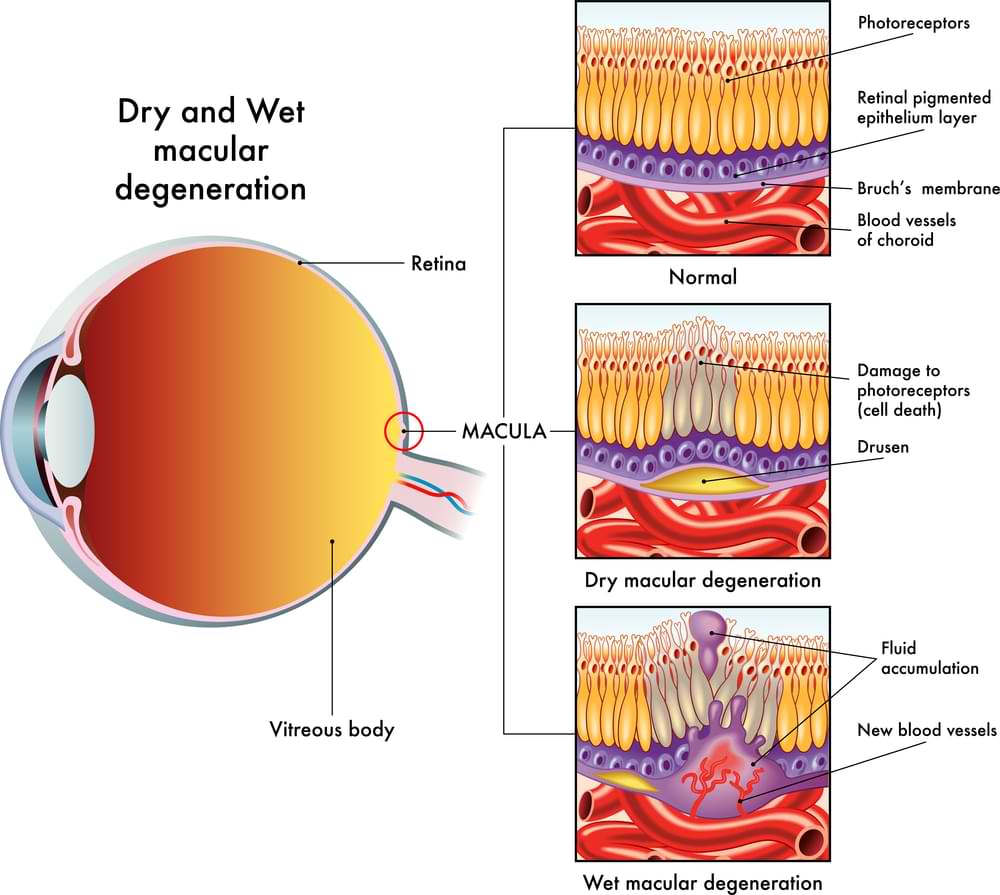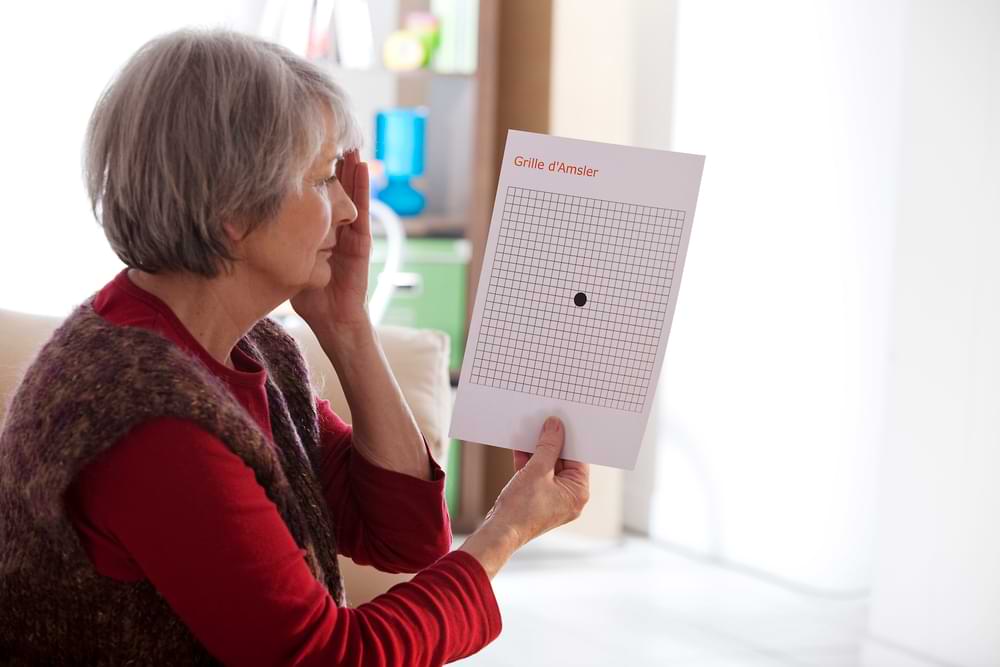What would you do if you lost the ability to read, drive, or recognise faces? Could something as simple as diet and regular check-ups help protect your eyesight from the onset of macular degeneration; a common eye condition affecting mostly elderly patients.
Vision loss is not inevitable if Age-related Macular Degeneration (AMD) is treated early.
I’m Nandita Chowdhury, the owner and principal optometrist at Picton Eyecare. With over 15 years of experience, I’m passionate about helping people protect and preserve their vision. Macular degeneration is a condition I often encounter with my patients, and I know how important early detection and tailored care can be. Untreated AMD may lead to legal blindness, affecting your independence.
Don’t wait until your vision worsens—schedule your eye exam today to protect your eyesight.
KEY TAKEAWAYS
● Macular degeneration is a leading cause of vision loss, but early detection and management can preserve eyesight.
● Wet AMD is treatable with anti-VEGF injections, while dry AMD benefits from lifestyle changes and supplements.
● Symptoms include blurry central vision, difficulty seeing in low light, and wavy lines.
● Risk factors include age, smoking, family history, sun exposure, and poor diet.
● Preventative measures like UV protection, a healthy diet, and routine eye exams can lower your risk.
● Regular monitoring with tools like the Amsler grid helps detect changes early for timely treatment.
Understanding Macular Degeneration
Macular degeneration primarily affects the central vision. It starts when the macula, a small yet crucial part of your retina responsible for sharp, detailed vision, begins to break down. While peripheral vision often remains intact, the loss of central vision can significantly impact daily life.
This condition is most commonly associated with ageing, often referred to as Age-related Macular Degeneration (AMD). There are two main types of AMD: Dry AMD and Wet AMD:
● Dry AMD is the more common type, which makes up about 80-90% of cases. It develops gradually as the macula thins over time, often due to the accumulation of tiny yellow protein deposits called drusen. Early stages may not present noticeable symptoms, but as it progresses, blurred vision and difficulty seeing in low light can emerge.
● Wet AMD, though less common, is more severe and progresses quickly. It happens when abnormal blood vessels grow beneath the retina, which results in fluid or leaks, and ultimately ends in distortion or blind spots in the central vision. Immediate medical attention is crucial to manage wet AMD and prevent further vision deterioration.
To understand more about the differences between Wet and Dry AMD, watch the following video from Dr Joseph Allen on the Doctor Eye Health YouTube Channel.
AMD Symptoms
The early stages of macular degeneration often show no noticeable symptoms. But as macular degeneration advances, you might start to experience signs like:
● Blurry or distorted central vision: Straight lines may appear wavy, or objects directly in front of you might lose sharpness.
● Difficulty seeing in low light: You struggle to see clearly in low light, which makes everyday tasks like reading or navigating dimly lit spaces challenging.
● Dark or blank spots in your field of vision: You have a hard time with facial recognition or focus on details.
Risk Factors
Certain factors increase your risk of developing AMD. These include:
● Age: Most cases occur in people over 50.
● Smoking: This habit doubles your risk.
● Diet: Saturated fats can contribute to macular damage.
● Family history: If a close relative has AMD, your risk is higher.
● Sun exposure: Excessive amounts of UV radiation over a lifetime are a factor in AMD.
How is Macular Degeneration Diagnosed?
At Picton Eyecare we use Optical Coherence Tomography (OCT), an advanced imaging technology, to get an accurate diagnosis of your eye condition. OCT captures detailed, cross-sectional images of your retina, which help us detect even the smallest changes in your macula.
The best part? It’s completely non-invasive and painless — you simply sit comfortably as the machine takes the images.
We also recommend the Amsler grid, a simple yet powerful tool you can use at home. This grid helps you spot distortions or blank areas in your central vision, which could indicate early changes in your macula.
For more complex cases, we may refer patients to an ophthalmologist for advanced diagnostics like fluorescein angiography, which uses a safe dye to highlight abnormal blood vessels, and retinal imaging to check for fluid buildup.

How is Wet Macular Degeneration Treated?
The primary treatment for Wet Macular Degeneration involves anti-VEGF injections.
What is VEGF? VEGF or vascular endothelial growth factor, is a protein that promotes the growth of these vessels. When you block VEGF, you experience reduced fluid leakage and help stabilise vision. For some, these injections can improve and maintain your visual clarity.
Treatment typically involves a series of appointments, usually spaced four to six weeks apart.
You’re probably asking yourself, “Does this procedure hurt?”
The answer is no: your eye is numbed beforehand with anaesthetic drops to minimise discomfort. Many patients find the process straightforward and well worth the results.
At Picton Eyecare, we collaborate with retinal specialists to provide the most effective and personalised care. Regular follow-ups are an essential part of this process, which go a long way in making us adapt treatments to your needs as they evolve.
Other treatments for wet AMD:
● Photodynamic Therapy (PDT): This method combines a light-sensitive drug with a special laser to close off leaky blood vessels. It’s less commonly used but remains an option in certain cases.
● Laser Photocoagulation: In this approach, a high-energy laser is used to seal abnormal blood vessels. While it’s not as commonly performed today, it can still be helpful in specific scenarios.
Prevention and Ongoing Care
As your optometrist, I recommend the below strategies to lower your AMD risk and stay proactive about your eye health:
● Protect your eyes from UV exposure: Wear sunglasses with anti-UV lenses whenever you’re outside, even on cloudy days. You can also wear a wide-brimmed hat for added protection.
● Follow a healthy diet: Incorporate leafy greens like spinach and kale into your meals. Add omega-3-rich fish such as salmon, mackerel, or sardines to your diet. Choose colourful vegetables and fruits high in antioxidants, like carrots, berries, and citrus fruits.
● Regularly test your vision: Use an Amsler grid at home to detect any changes in your central vision. Pay attention to symptoms like blurry, wavy, or distorted vision and report them immediately.
● Control high blood pressure and cholesterol. These can exacerbate AMD.
● Reduce or quit smoking. Giving up cigarettes (and avoiding passive inhaling) is one of the most impactful steps you can take for your eyes.
● Schedule routine eye exams: Regular check-ups allow us to catch early signs of macular degeneration.
● Consider eye health supplements: Macular health vitamins like Macutec and Macuvision Plus provide essential nutrients such as lutein, zeaxanthin, and zinc, which support retinal function. We stock Macutec in our practice—ask us if it’s right for you.

Living with Macular Degeneration
A diagnosis of AMD doesn’t necessarily translate to a reduced quality of life. With the right tools and support, you can adapt to vision changes effectively:
● Assistive devices are a practical way to make daily tasks more manageable. Handheld magnifiers, electronic screen readers, and devices with larger fonts can significantly improve your ability to read, cook, or use technology. Many modern gadgets also come with built-in accessibility features, such as voice commands and high-contrast modes, which simplify everyday activities.
● Low-vision rehabilitation offers targeted support for vision changes adaptation. These services often include training on how to maximise your remaining vision and use specialised equipment effectively. Rehabilitation professionals can also help you redesign your home environment to improve lighting, reduce hazards, and make navigation easier.
● Community support is equally important. Joining a local or online support group can connect you with others who understand your experience. These groups often share practical advice for coping with vision loss and provide valuable emotional encouragement.
CONCLUSION
Macular degeneration, is a leading cause of vision loss that affects central vision and comes in two types: dry and wet AMD.
Wet AMD can be managed with anti-VEGF injections, while dry AMD progression may be slowed with lifestyle changes and supplements.
Prolonged inaction could mean missing the opportunity to benefit from effective treatments. Untreated AMD can significantly impact independence, quality of life, and emotional well-being.
Remember, early detection can save your vision and improve your quality of life — so don’t wait! Book an appointment with us today. Let’s ensure you have peace of mind about your most important sense – your eyesight.
You can call us on (02) 4603 2309 or arrange an appointment using the “Book Now” button in the website menu. We are conveniently located in the heart of Picton, NSW. There is plenty of parking available at the back of our store.

B.Optom (UoA), PGOT (UNSW)
Nandita is the principal optometrist of Picton Eyecare. She has over 15 years of extensive experience working in corporate and independent optometry practice. Opening Picton Eyecare in 2022 has fulfilled Nandita’s dream of an independent optometry practice, committed in serving the local community of Wollondilly and surrounding areas.
Nandita is caring and passionate about providing professional, personal and customised solution for every patient. She takes interest in all her patients and employs her skills and expertise to achieve the best possible outcome for the patient. She maintains great relationships with other medical professionals in the area.
Nandita is a local resident and has been working in the Southern Highlands for many years. She has a loyal following of patients who value her clinical and interpersonal relationships.
When not at work Nandita loves spending time with her family.
